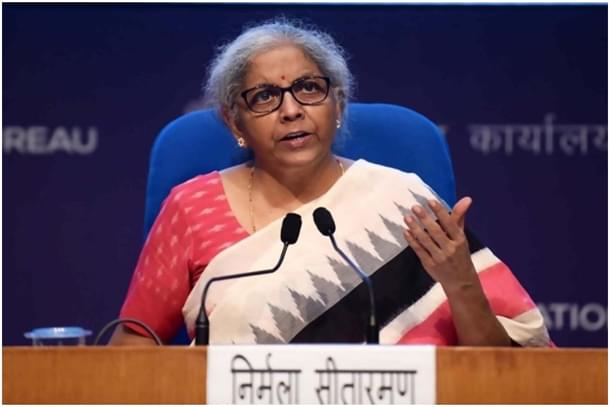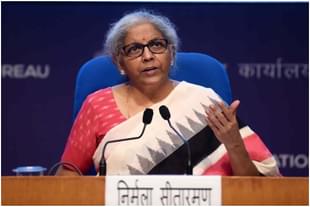Infrastructure
NMP: National Monetization Pipeline Is A Big And Important Step In Institutionalizing Infrastructure Finance; Here's Why
Pratim Ranjan Bose
Aug 27, 2021, 03:42 PM | Updated 03:42 PM IST
Save & read from anywhere!
Bookmark stories for easy access on any device or the Swarajya app.


Debates are essential to a democracy and so about the four-year, Rs 6,00,000 crore asset monetization pipeline or National Monetization Pipeline (NMP), of the Union government. But the question is debate on what? Unfortunately, the majority of the arguments against the NMP, so far, are built on the 'We oppose it because I don’t like you' principle.
The underlying principle behind monetization is known. The government is building infrastructure at an unprecedented pace and needs private investments to finance it. The need is higher as India is not a trade surplus economy and, to reach there the country needs to build fine next-generation infrastructure.
Why monetization?
To understand the connection between the two, one can look at the latest crisis in ocean trade where freight is zooming by a few hundred times and yet container space is unavailable. A faster turnaround in the China-US route is attracting the shipping traffic, while Indian cargo is waiting at transhipment ports in Colombo, Singapore or Port Klang.
The space availability for Indian cargo could have increased had we have a transhipment port or our own, like China or the US. The Narendra Modi government wants to fill the gap but that will not come easy. Having a port is not enough. Billions of dollars have to be thrown at the sea before we could convince both the trade as well as shipping lines to use the port.
This is just a fraction of the problem. The need-based models in infra building that we followed in the past are here to go. Time to create infra redundancy, which comes at a great capital cost but ends up making entire economic processes smooth.
How costly? The government is building $28 billion worth of highway infrastructure in the north-east alone. Another USD five billion is spent on rail infra. Billions of dollars are pumped into Bangladesh and Myanmar to connect the region with wider market space.
The Mumbai-Ahmedabad bullet train will cost nearly $13 billion, under construction western and eastern DFCs (dedicated freight corridor) together will cost an estimated $11 billion; and we need more of them. USD 10 billion is going to create expressways in Uttar Pradesh alone. As a hinterland, better logistics is key to UP’s potential to attract investment.
The entire hinterlands of Bihar, Madhya Pradesh, Chattisgarh, Jharkhand, etc need such infrastructure. Lack of it led to the concentration of industries in coastal States like Tamil Nadu or Maharashtra, ignoring rising costs.
Uptil now, we mentioned only the transport logistics part of infra. But the argument can be expanded to other infra like power or even the sports infra.
Gone are the days when thermal power projects calculated returns at a minimum 85 percent load-factor (PLF). Now PLF rules close to 50 percent. Also gone are the days of inadequate transmission and distribution capacity. As India moves to 24X7 power and green power, it needs redundancy across the value chain, which comes at a cost.
Loot, BOOT, InvIT
Not that the Modi government is the first one to think of infrastructure. The Manmohan Singh government gained out of infrastructure projects initiated by the Vajpayee government and wanted to expand the idea. Grand plans were announced in every segment, particularly in highway infrastructure. In the end though, it flopped.
As in 2014, when the new government came to power, India was sitting on a huge portfolio of stalled projects. The primary reason behind the failure was money. The government didn't have money, so they took an easy route, Build-Own-Operate-Transfer or BOOT, under the aegis of private-Public-Partnership (PPP).
The private sector was invited to put their money in building highways and bridges and wait for 25-30 years to recover it through toll. Till that time the asset is theirs. Not only highways; even a few power transmission lines came up on the BOOT project. UPA also allowed building transmission lines on full private ownership.
While there was less controversy about transmission projects, BOOT brought highway construction to a grinding halt. Most construction engineering companies were lured into these projects. Most ended up locking their finances in unbankable projects and went bankrupt.
The Modi government ended the logjam by trying to increase the government exposure in projects. The investors didn’t show much interest even in the annuity model. The majority of highway projects underway in the country now are almost fully funded by the government, using borrowed resources.
To step up the gas, the government now needs new investment models. Globally pension funds look for long gestation investment options. But they need a tradable investment vehicle, not a piece of road which will be blocked by some Rakesh Tikait and company. So came InvITs or Investment trusts.
InvITs are capital market instruments, similar to a mutual fund, which enable investment in infrastructure projects. The trust decides on which project to invest in. A small portion of the income from projects goes back to investors. Tradability of the instrument ensures retail participation and exit route to investors as well.
The Indian government has been promoting such trusts for the last couple of years. The ground was created by Sebi (Infrastructure Investment Trusts) (Amendment) Regulations, 2016. Sebi (Securities and Exchange Board of India) is the regulator. The route is gaining popularity. State-owner PowerGrid recently made a public offer of its first InvIT.
With the vehicle becoming a success, the government now wants to use it to monetise a set of developed assets. It’s a win-win. The government will unlock blocked finance from stretches of highway or transmission lines that are generating revenue and invest in assets for tomorrow. Investors will get low but less risky, long gestation investment options.
But, Congress scion Rahul Gandhi equates it to the “sale of national assets". He is not alone. Dole-economy champion, Trinamool Congress of West Bengal and Kerala-confined CPI(M), toed the same line. Veteran CPI(M) leader, Sitaram Yechuri, described it as “loot”.
Wonder if the Opposition is aware of BOOT, where companies were virtual owners of stretches of highways or transmission lines, for the lease period.
Questions remain
It doesn’t mean there is no scope of debate on the monetization plan. InvIT will not be the only vehicle for monetization. The government is considering various routes including operate-manage-develop, to unlock finance.
This is necessary. The cash-strapped Indian Railways owns huge tracts of real estate – in the form of stations or railway colonies - at the heart of the cities across India. The gross majority of this land was acquired during British India and a good part now stands encroached.
Today they may be worth crores, provided one knows how to develop it and that’s specific know-how available to real estate developers. The shops inside Railways operated Kolkata Metro barely attract shoppers. Because the stations were not built suitably. The experience is similar in many other metro stations across the country.
To put it straight. However ideal it might sound, railways must not try to develop real estate and create white elephants. It is important to attract a private developer. Railways might gain through lease rental. Some of the commuters accustomed to private airlines, airports; might come back to rail as well.
At personal and corporate levels this is happening everywhere. The landowner is giving property to the developer on a joint venture basis. He gets a share of the developed real estate plus money. Developers lease real estate to top hotel brands, who don’t want to block money in brick and mortar. So, why can't railways?
There is, however, only one deficit: Trust. From divestment of proven oil assets of ONGC and fast track power plants in the PV Narasimha Rao days to the captive coal rush during Manmohan Singh’s rule; Indian governments of the past, have a poor track record in managing precious resources.
The Modi government created an example by strongly advocating for lock, stock, and barrel coal-block deallocation in the Supreme Court way back in 2014-15. It sent a strong message to the oligarchy, which once controlled as crucial a policy space as energy and telecom.
NMP is an outstanding proposal. If duly implemented, it will not only ensure the country’s big-leap forward in infrastructure space but will also increase public awareness about the importance of the private sector in ensuring growth.
The optics are huge. The government should take utmost care in investing in due regulatory mechanisms to improve transparency and regain public trust.





